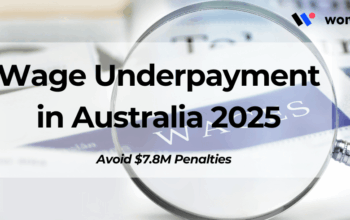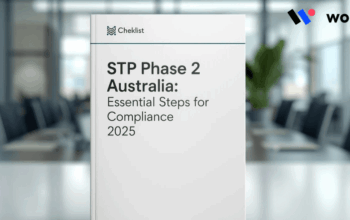Transition Overview: Quarterly vs Payday Super
| Feature | Quarterly Super | Payday Super |
| Payment Frequency | Every 3 months |
Each payday |
| Deadline | 28 days after quarter ends |
Same day as salary payment |
|
Reporting |
Manual quarterly reports | Real-time reporting via STP |
| Compliance Risk | High (missed/late payments) |
Low (immediate verification) |
| Employee Benefits | Delayed compounding |
Immediate investment growth |
Key Change: From 1 July 2026, all employers must switch to Payday Super payments.
Step-by-Step Transition Timeline
2024 Q4: Preparation Phase
- Audit current super processes
- Update payroll software (ensure STP2 compatibility)
- Inform employees about upcoming changes
2025 Q1-Q2: Testing Phase
- Run parallel simulations (quarterly + payday)
- Train HR staff on new workflows
- Verify fund details with employees
2025 Q3-Q4: Soft Launch
- Optional early adoption for compliant businesses
- Test real-time reporting with select funds
2026 July 1: Full Implementation
- Mandatory Payday Super begins
- Quarterly payments officially phased out
Real-Time Benefits for Businesses & Employees
For Employees:
- Faster Compounding: Super invested immediately (not held 3-4 months)
- Visibility: See contributions in real-time via myGov
- Dispute Resolution: Quicker error detection
For Employers:
- Reduced Penalties: Avoid $1,110+ fines per late payment
- Automated Compliance: STP2 auto-submits data to ATO
- Cash Flow Management: Smaller, frequent payments vs large quarterly sums
How Workstem Simplifies Payday Super Compliance
Simplify award interpretation and payroll processing with Workstem, the all-in-one workforce management & payroll software designed for every industry.
Workstem‘s automated payroll platform is engineered for the Payday Super Australia 2026 era. We transform this regulatory change from a challenge into an opportunity for efficiency.
- Auto-Calculate Super: Accurately compute liabilities for every pay cycle, every time.
- One-Click SuperStream Payments: Submit and pay super contributions directly to funds with a single action.
- Centralised Employee Management: Keep all super fund details secure, up-to-date, and easily accessible.
- Ensure Unbroken Compliance: Maintain a clear, digital audit trail for every transaction, ready for reporting.
Choose from our Standard or Advanced plan to suit your business needs, and stay Fair Work compliant with confidence.
Payday Super Q&A: Your Top Questions Answered
Q1: What is the exact start date for Payday Super?
A: The government has announced a start date of 1 July 2026. Legislation to enact this change is expected to be introduced in Parliament during 2025.
Q2: Does Payday Super apply to all businesses?
A: Yes. The new rules will apply to all Australian employers, regardless of size or industry. This includes small businesses, sole traders with employees, non-profits, and government entities.
Q3: What happens if I pay my employees early, but their super is paid on the official payday?
A: The law requires super to be paid on the same day as salary and wages. If you pay wages early, your super contribution must also be made on that same early date. The key is simultaneity.
Q4: How does Payday Super affect my cash flow?
A: Instead of one large quarterly payment, you will make smaller, more frequent payments. This requires more active cash flow management but can prevent the burden of a significant quarterly outlay. Forecasting is essential.
Q5: Will the Super Guarantee (SG) rate still be increasing?
A: Yes. The SG rate is legislated to continue rising to 12% by 2025. Payday Super is a separate reform about the timing of payments, not the rate.
Q6: What are the penalties for non-compliance?
A: The ATO will have enhanced visibility through the real-time system. Penalties for late or unpaid super will still apply, including the Super Guarantee Charge (SGC), which is not tax-deductible and includes interest and administration fees.
Q7: Can I use a transition period to adjust?
A: The government has indicated a phased approach to allow software developers and businesses time to prepare. However, all employers are expected to be fully compliant by the 1 July 2026 deadline.
Q8: How does Payday Super work with my current payroll software?
A: You must check with your provider. Older or basic software may not support the automated, SuperStream-integrated payments required. Modern, compliant platforms like Workstem are being updated to handle these changes seamlessly.
Book a free demo with our payroll experts and experience how Workstem can streamline your payroll and workforce operations.
Read More:
How Pay Day Super Affects Your Business








